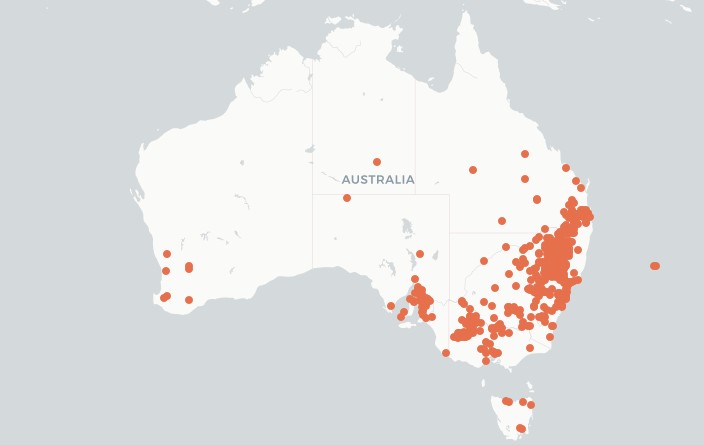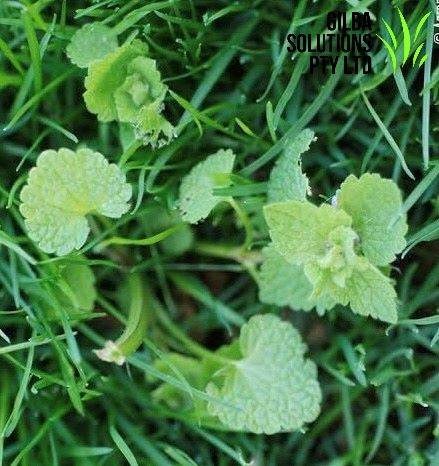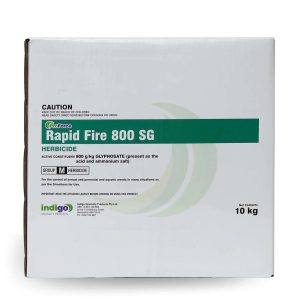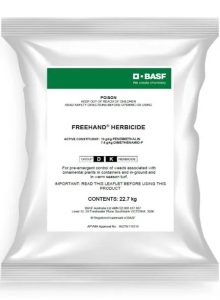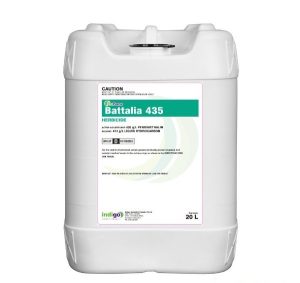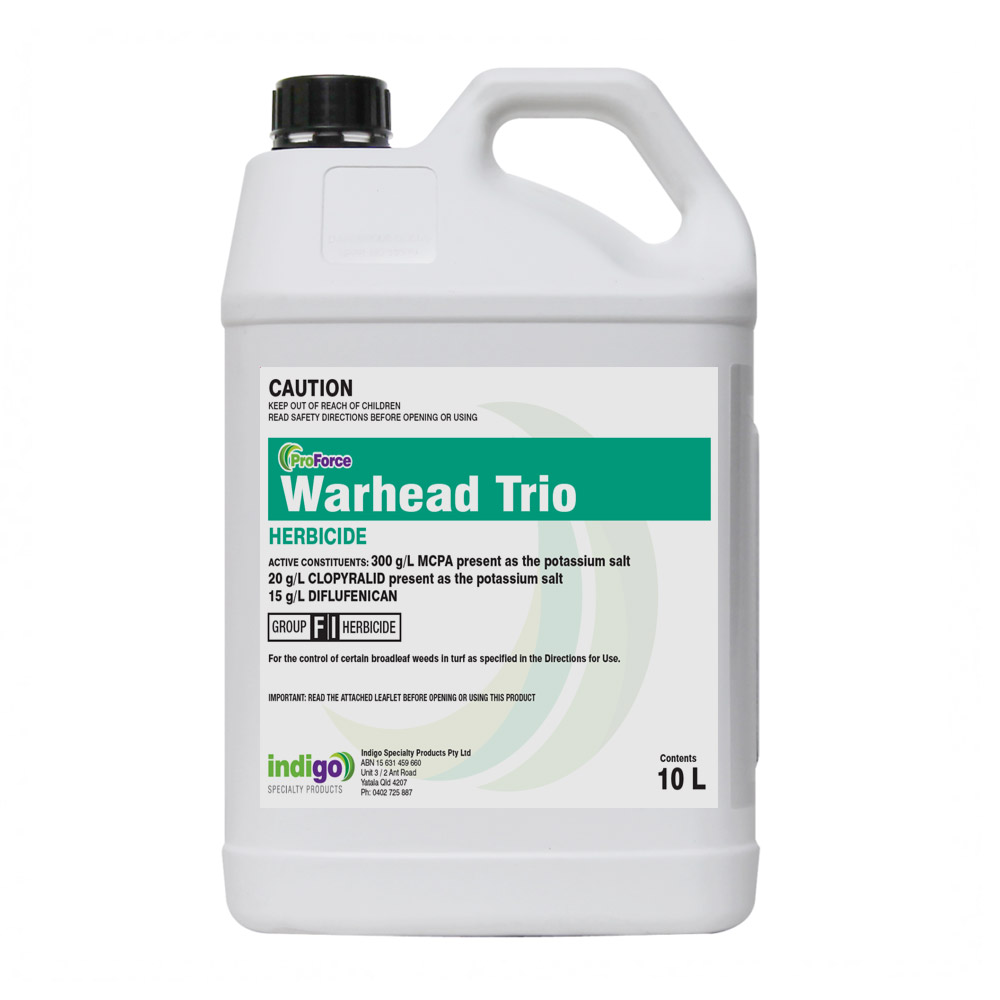Deadnettle (Lamium amplexicaule L).
Deadnettle is a cool season annual also known as Henbit and Henbit Deadnettle. It has the name “Deadnettle” because it looks like stinging nettles, but without the sting.
Henbit is a Winter annual or biennial, and sometimes a fast-growing, Spring germinating annual.
After you read this, you will be able to:
- Identify Henbit Deadnettle.
- Know the habitat of Henbit Deadnettle.
- Know the best options to control Henbit Deadnettle.
Why is Deadnettle a Problem Weed?
- Deadnettle quickly forms dense patches in lawns and gardens.
- It spreads by seeds and by vegetative growth.
- It produces large numbers of seeds that are viable for long periods.
- Deadnettle thrives in moist, disturbed soils, or where the turf cover is thin.
- Deadnettle tolerates a wide range of soils.
- It causes staggers in livestock, with sheep being the most susceptible
For more information, please check out our weed ID chart.
Deadnettle is a good indicator weed of cool, wet areas, and is in all States and Territories in Australia, including the ACT.
The distribution map for Henbit is courtesy of The Atlas of Living Australia.
Table of the Differences Between Deadnettle vs Henbit and Creeping Charlie.
Plant | Growth Habit | Flowering | Creeping | Stem | Leaf Stalks | Leaf Shape | Teeth on Leaf |
Deadnettle | Winter Annual | Early Spring | Yes | Square | Long on lower leaves and short on upper leaves. | Hairy oval- to egg-shaped | Rounded teeth on edges |
Creeping Charlie | Perennial | Late Spring | Yes | Square | Long | Kidney | Yes |
Henbit | Winter Annual | Early Spring | Yes | Square | On lower not on upper | Hairy oval- to egg-shaped | Yes |
Henbit Deadnettle Identification.
It is often mistaken for Creeping Charlie and Henbit:
- They all have hollow, square stems.
- They all have small purple flowers.
- The key difference is Henbit Deadnettle is an annual that flowers in the early Spring, and then dies in late Spring. Creeping Charlie is a perennial that flowers in the late Spring.
- Unlike many other members of the mint family, Henbit does not have a strong mint scent.
Henbit Deadnettle is a common, low growing competitive weed. There are fuzzy hairs and prominent veins on its upper leaf surfaces.
Being a Winter annual, Deadnettle germinates in the Autumn, survives over the Winter, and then flowers and seeds. Once temperatures rise in the late Spring and early Summer it dies off.
Category: Herb
Photosynthetic Pathway: Deadnettle is a C3 Weed.
Flower: Henbit Deadnettle has clusters of about 12 pink to purple tube shaped flowers. These are 1.5 to 2 cm long, and bloom in the Spring.
Height: Often grows up to 10 to 25 cm tall.
Leaves: Deadnettle leaves are 2 to 3 cm in size. They are opposite in pairs, and each pair of leaves is at 90° to the pair below it. It does not form a rosette.
Reproduction: Henbit reproduces by seed, but it also spreads from stem fragments. New seeds are dormant, and require one or more Winters before they germinate.
- Seed longevity: >5 years.
- Seeds/plant: 200.
Comments:
- Deadnettle has a fibrous root system, and a taproot that is up to 20 cm long.
- It has soft, hairy stems, that emerge from the base of the plant.
- The stems are often purple.
- The upper leaves of Deadnettle attach directly to the stem.
- It is frost and drought tolerant, and tolerates partial shade.
Habitat: You find Deadnettle in disturbed sites, in fields, roadsides, and also in lawns.
How to Remove Deadnettle from your lawn.
Timeline for Deadnettle Management.
Management Calendar for Deadnettle | ||||||||||||
Winter annual | ||||||||||||
Month | Jan | Feb | Mar | Apr | May | Jun | Jul | Aug | Sep | Oct | Nov | Dec |
Germination | ||||||||||||
Flowering | ||||||||||||
Seeding | ||||||||||||
Vegetative Growth | ||||||||||||
Dormant | ||||||||||||
Pre emergent herbicide | ||||||||||||
Post emergent herbicide | ||||||||||||
Cultural Control of Deadnettle.
Being a Winter annual and biannual broadleaf weed, Deadnettle grows in periods of warm weather over the Winter. Henbit Deadnettle resumes growth and produces seed in the Spring, and then dies as temperatures increase in the late Spring and early Summer.
- Henbit Deadnettle quickly invades thin turf areas, especially if there is excess soil moisture. So deal with any soil compaction and improve the drainage.
- Mowing is not effective as it can have a prostrate growth habit.
- Maintain a healthy turf cover. Select a turfgrass cultivar suitable for your area, and then properly fertilize, mow, and irrigate to encourage growth.
- Water the lawn deeply but as infrequently as possible in the Autumn, as weed seeds need soil surface moisture to germinate.
- You can pull small numbers by hand. The best time to do this is when the plants are small, the soil is moist and before Deadnettle seeds.
If you don’t use a pre-emergent herbicide, early Spring vertical mowing and hollow-tine aeration will increase Henbit in thin turf areas.
Chemical Control of Deadnettle.
Always aim to implement cultural controls before you use herbicides for Deadnettle control. However, chemical control may still be necessary to manage this weed.
As it is a Winter annual, it will naturally die in the Summer so you don’t need to apply herbicides in the late Spring. You can see heat stress start to kick in when the leaves start to turn yellow.
Pre-Emergent Control for Deadnettle.
Control of Henbit with a pre-emergent is best in the late Summer or early Autumn.
- Battalia 435
- Envu Esplanade
- BASF Freehand.
- Metolachlor
Post Emergent Control of Deadnettle.
- The ideal time for a post-emergent herbicide is when Deadnettle is small and actively growing. This tends to be in the late Autumn after the weed germinates, but before the temperatures begin to drop and plant growth slows (aim for an air temperature above 10°C).
- Apply chemical controls in the Autumn or early Spring for the best results. Keep in mind that herbicides don’t work as well as this weed matures.
- When Henbit flowers in the Spring, it is then very difficult to control. At this stage it is likely to be too late to prevent the production of viable seed.
- If you do make Spring applications make sure you do these before it flowers. A three-way herbicide is the best option to use.
There are several selective post-emergents that control this weed.
- Products that contain MCPA, and Dicamba usually provide the best results.
- Treatment is best over the entire area rather than spot treating.
- Dicamba. Do not use Dicamba on Buffalo grass.
- Warhead Trio. Safe to use on Buffalo grass.
- Stature Herbicide. Not for use in the home garden.
- QualiPro Negate. Not for use on Buffalo, but is safe on warm season turf grasses like Couch and Zoysia.
- Bispyribac Sodium in the USA.
- Foramsulfuron in the USA.
- Metribuzin.
- Trifloxysulfuron in the USA.
- Iodosulfuron in NZ.
Table of Post Emergent Herbicides for Deadnettle Control.
Product | Active | Chemical Group | Rate/Ha | Comments | ||||
Dicamba | Dicamba | 4 | 1.2L + 3.2L of 2,4-D Amine 625g/L | Use a minimum of 1000L/Ha water. Do not spray on Buffalo or Bent Grass. | ||||
MCPA | MCPA | 4 | 930ml -1.8L | Apply in high volume to actively growing weeds. DO NOT mow for 2 days before application. Some transitory damage may occur to fine turf grasses | ||||
Negate. | Rimsulfuron + Metsulfuron-methyl | 2 | 110g | Apply to growing weeds and not to stressed weeds. | ||||
Stature | MCPA + Bromoxynil + Diflufenican | 4 + 6 + 12 | 2L | Apply to actively growing weeds. Complete control may take 4 to 6 weeks. A repeat application maybe needed in 4 – 6 weeks. Use a surfactant for difficult to wet weeds. Apply in 200 to 500 L of water. Transient discolouration may occur up to 21 days following application. | ||||
Warhead | MCPA + Clopyralid + Diflufenican | 4 + 12 | 5 L | You may see discolouration on kikuyu, carpet grass and Queensland blue. Avoid overlapping. Use an NIS. | ||||
Non Selective Deadnettle Herbicides.
You cannot use any of these on lawns or turf areas to selectively remove Deadnettle.
- Glufosinate-ammonium provides control for 4 to 6 weeks, but it regrows and recovers due to the limited movement of glufosinate.
- Glyphosate. You can use Glyphosate but if water quality is an issue then use ProForce Manta Ray.
These are non-selective but also have a long term residual and stop any re-growth.
- Renegade. Renegade stops Deadnettle seeds from germinating for up to 12 months. This reduces the need for multiple herbicide applications.
- Numchuk Quad. This controls Henbit Deadnettle as a pre- and post emergent for up to 12 months.
- Cortex Duo. Cortex Duo gives a rapid knockdown of Deadnettle, and residual control for up to 3 months. It is also safe to use around trees.
Table of Non Selective Deadnettle Herbicides.
Product | Active Ingredient | Group | Use Rate/Ha |
Glufosinate 200 | Glufosinate-ammonium | 10 | 1 to 6 L |
Rapid Fire 800 | Glyphosate | 9 | 0.9 to 1.35 Kg |
Numchuk Quad | Terbuthylazine + Glyphosate + Amitrole Oxyfluorfen | 5 + 9 + 34 + 14 | 20 to 25 L |
Cortex Duo | Nonanoic Acid + Oxyfluorfen | 14 | 7 L/1000L |
Renegade | Bromacil | 5 | 3.5 to 6.5 Kg |


